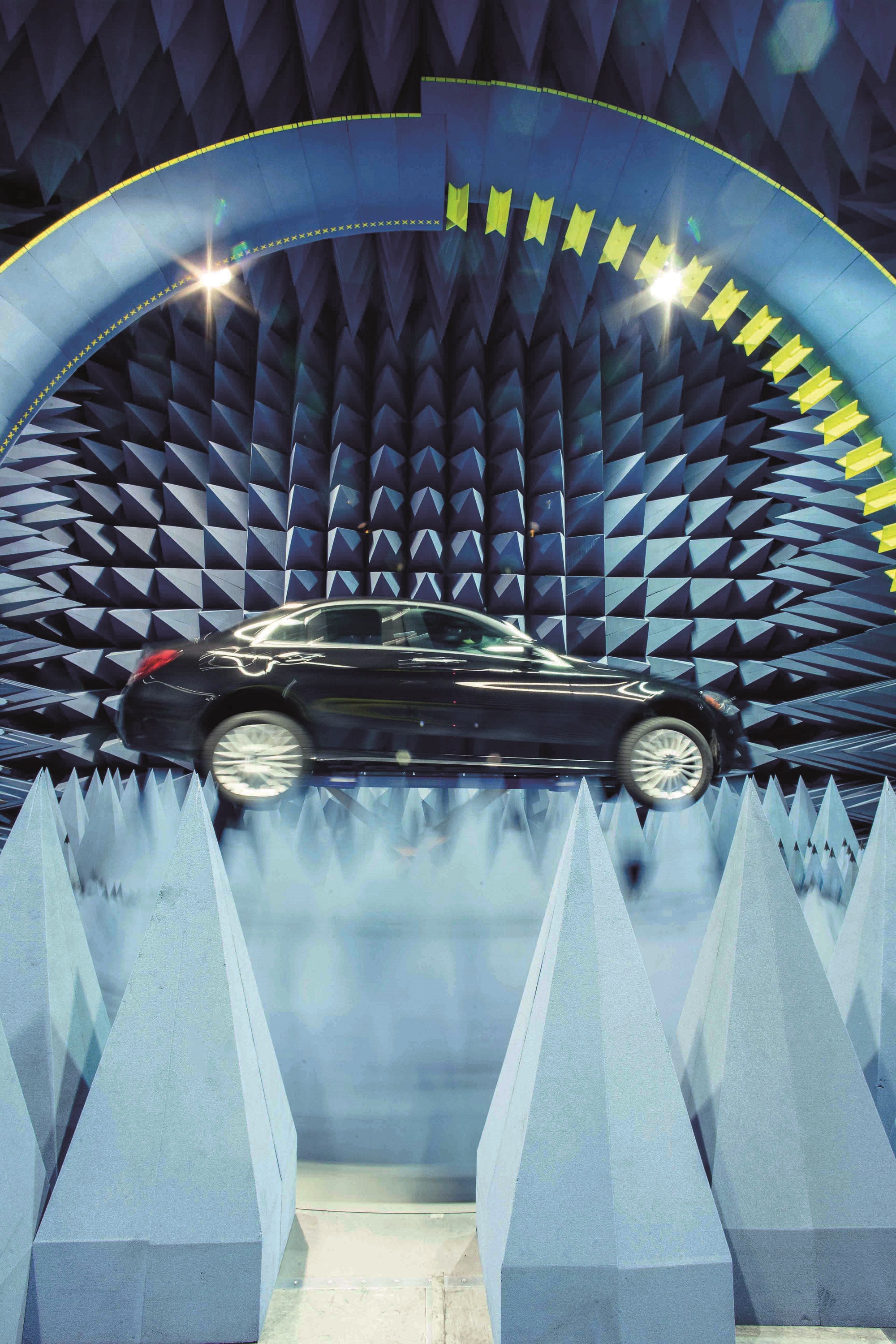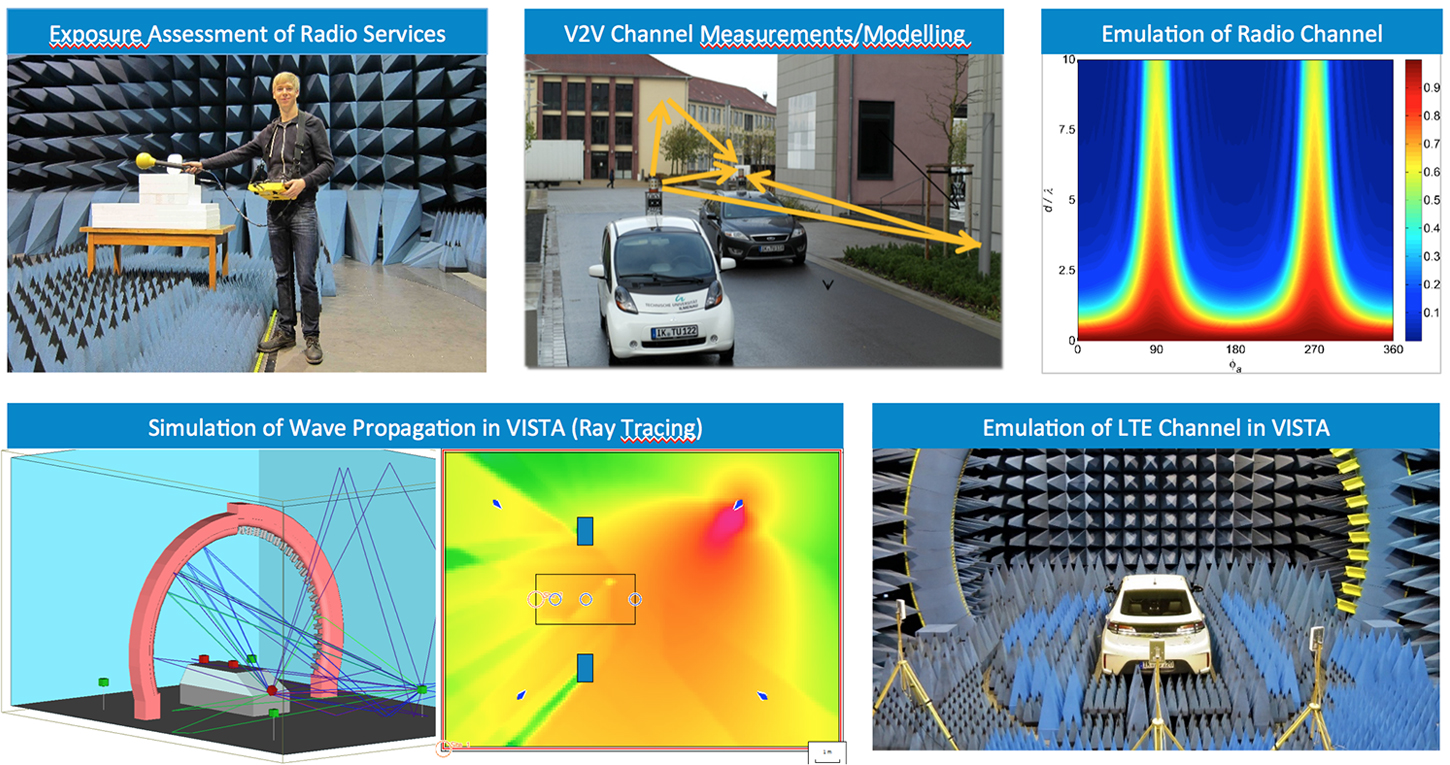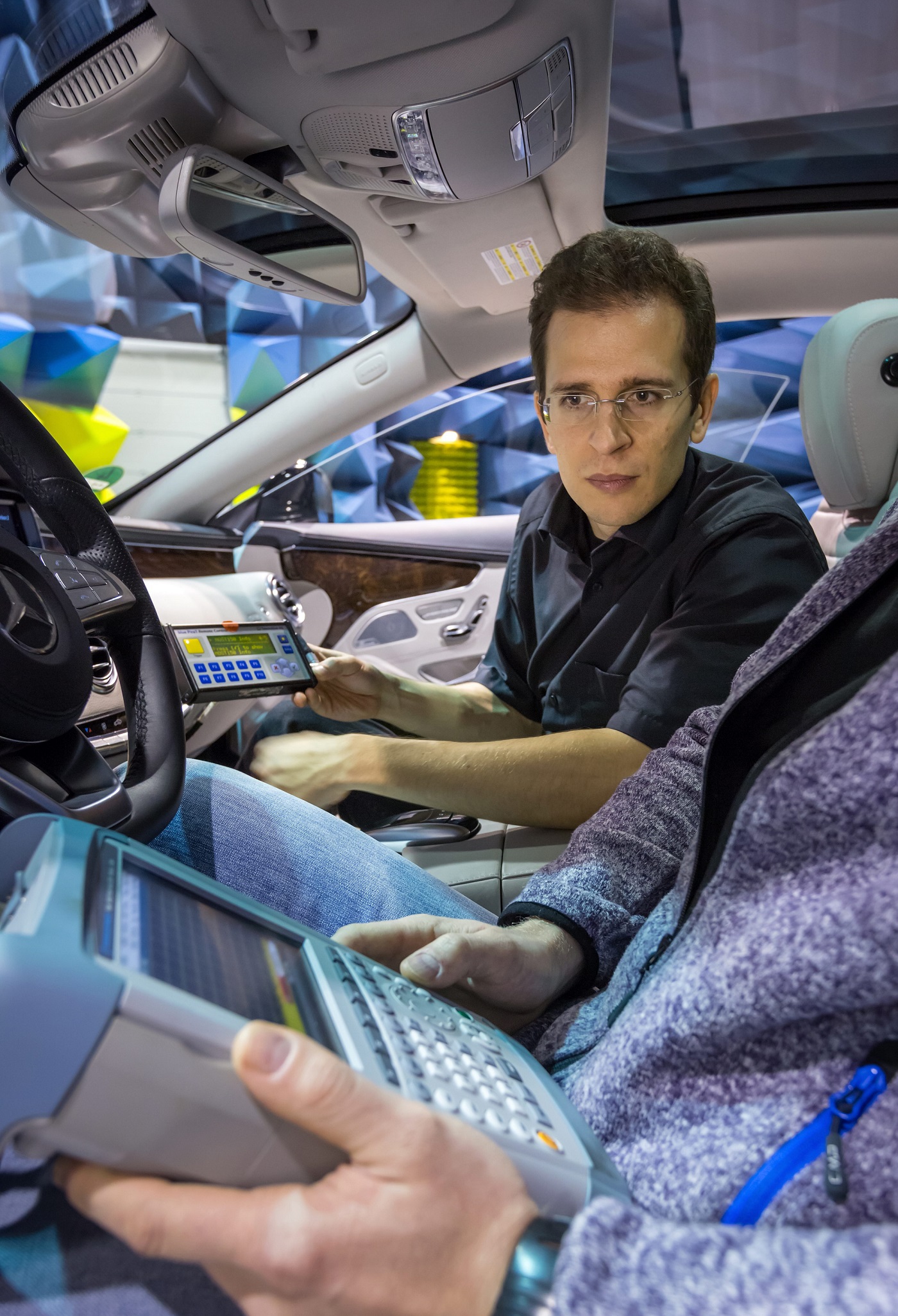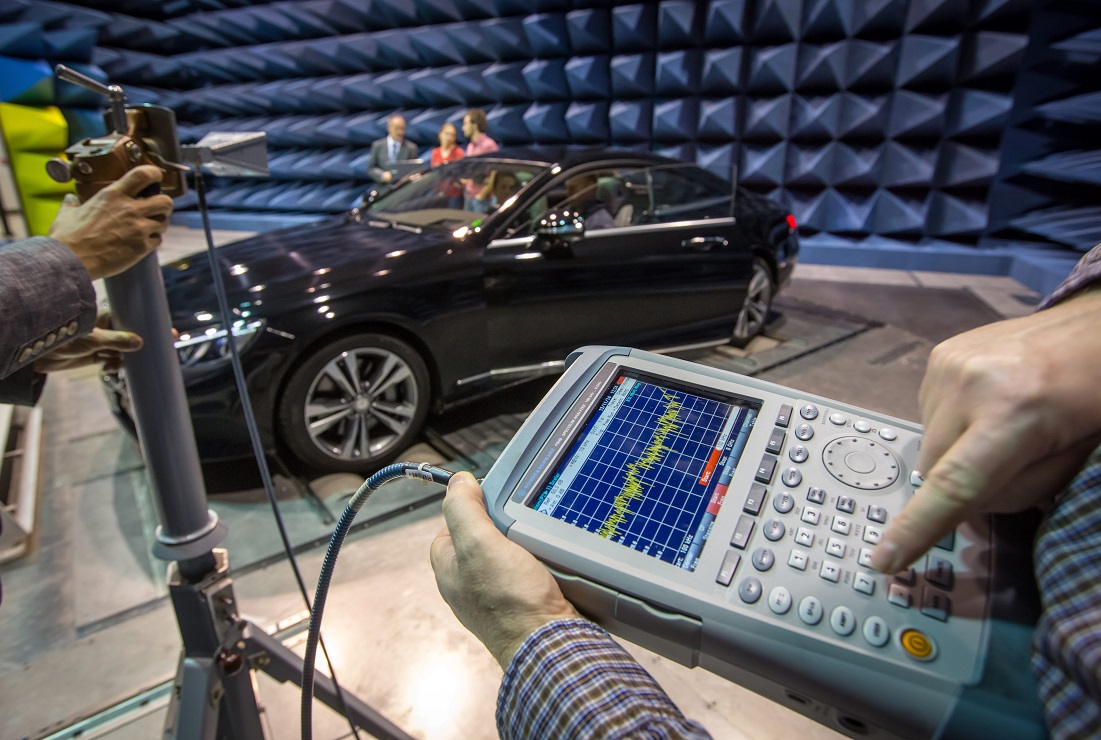Core Competence Wireless and Information Technologies
Wireless systems take over safety-critical functions in the connected car and, therefore, gain more and more relevance. Any system for the detection and recognition of position, environment, and states of driver and vehicle must remain functional, reliable, resilient, user- and environment-friendly at all times. In this context, wireless sensing and data transmission as well as field immission, coexistence, and interference present key research areas.
The core competence Wireless and Information Technologies builds on the joined expertise of the research groups “RF and microwave technologies” and “Electronic measurements and signal processing”. Unique infrastructure offers the optimal basis for top-level research.
Topics
- Automotive antenna and wireless transmission systems for terrestrial and satellite communications, sensor technologies, satellite navigation and localisation
- Automated and connected driving, car-to-X, ITS-G5, mobile communications 5G, 6G
- Measurement and testing, modelling and realistic emulation of wireless propagation channels for different radio services
- Over-the-air end-to-end tests and evaluation of automotive radio systems in virtual radio environment
- EMC and human exposure in electromagnetic fields: Exposure measurement and assessment of vehicle internal and external radio services

Reference Project
Elektromagnetic compatibility, radio and channel measurements in the virtual road - simulation and test area (ELVIS)
Show projectReference Project
Name of project:
Electromagnetic compatibility, radio and channel measurements in the virtual road – simulation and test area (ELVIS)
Project period:
04.2016 – 09.2018
Funding agency:
Thüringer Aufbaubank on behalf of the Thuringian Ministry for Economics, Science, and Digital Society
Project consortium:
RF and Microwave Research Group, Electronic Measurements and Signal Processing Re-search Group, Automotive Engineering Research Group
Abstract:
The research unit ELVIS addresses the issue of cooperative wireless connectivity among cars and between cars and roadside as well as telecommunication infrastructure (car-to-X, C2X) as well as appropriate design, testing and verification methods. Technical feasibility and economic success of C2X applications depend strongly on functionality, availability, and low latency for the wireless transmission of safety-critical data; therefore, reliability, coexist-ence and interference present essential challenges for relevant and timely fundamental re-search with a pronounced practical orientation. In the framework of ELVIS, key issues of electromagnetic environmental compatibility, development and measurement technology of integrated automotive antennas, design and implementation of end-to-end over-the-air test methods, and concept developments for realistic modelling of the radio channel under repro-ducible laboratory conditions are addressed. Real-time capable connected testlabs for the cooperative research of automotive drivetrain, control and wireless technologies (X-in-the-loop) play an essential role in this context.





